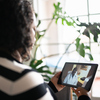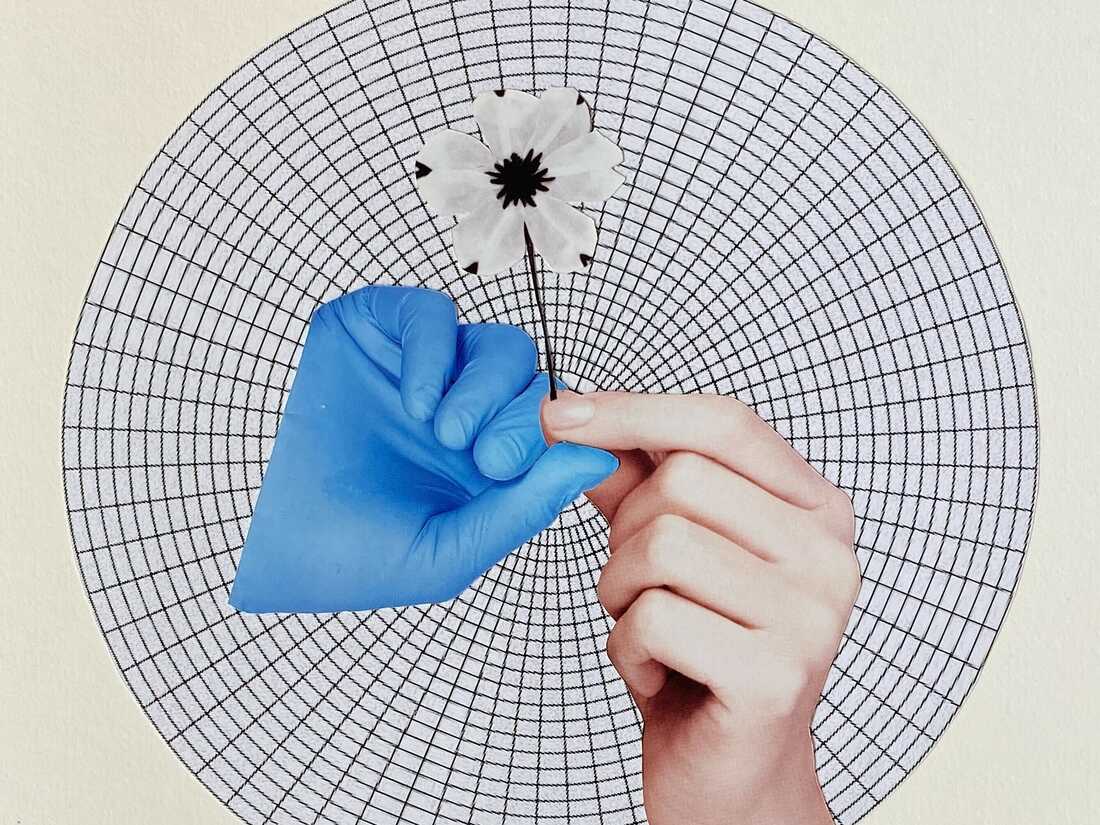
Dr. Laura Tafe, a pathologist on the Dartmouth Hitchcock Medical Heart created this collage, titled ‘Compassion.’ which seems in Artists Remaking Drugs. She writes that it displays her hope for a future well being care system that helps the movement of compassion and empathy between sufferers and clinicians.
Laura Tafe/Process Press
disguise caption
toggle caption
Laura Tafe/Process Press

Dr. Laura Tafe, a pathologist on the Dartmouth Hitchcock Medical Heart created this collage, titled ‘Compassion.’ which seems in Artists Remaking Drugs. She writes that it displays her hope for a future well being care system that helps the movement of compassion and empathy between sufferers and clinicians.
Laura Tafe/Process Press
In 2016, Emily Peters turned, as she places it, a “statistic within the maternal well being mortality disaster.” Whereas giving beginning to her daughter, she had an amniotic fluid embolism, a uncommon and life-threatening complication that landed her within the intensive care unit.
Peters ultimately recovered. However she says she was disturbed by the dysfunction she witnessed throughout her hospitalization, “all these little cuts which might be so demoralizing.” For example, her wholesome new child daughter was discharged from the hospital whereas Peters remained in ICU care — she and her husband needed to pay for a personal nurse so they would not be separated from their days-old toddler.
Peters, who works as a well being care model strategist, determined to work to repair a few of what’s damaged within the American well being care system. Her strategy is provocative: she believes artwork generally is a instrument to remodel drugs.
Drugs has a “creativity downside,” she says, and too many individuals working in well being care are resigned to the established order, the dehumanizing forms. That is why it is time to name within the artists, she argues, the individuals with the talents to ascertain a radically higher future.
In her new e-book, Artists Remaking Drugs, Peters collaborated with artists, writers and musicians, together with some medical doctors and public well being professionals, to share stunning concepts about how creativity would possibly make well being care extra humane.
“It’s about creating this very desperately wanted tradition change,” Peters says. “It is exhausting to hope proper now … you must observe hoping, you must observe imagining a greater system.”
For instance, the e-book profiles digital musician and sound designer Yoko Sen, who has created new, gentler sounds for medical monitoring gadgets within the ICU, the place sufferers are sometimes subjected to infinite, harsh beeping.
It additionally options an avant-garde artwork collective known as MSCHF (pronounced “mischief”). The group produced oil work constructed from medical payments, 1000’s and 1000’s of sheets of paper charging sufferers for issues like blood attracts and laxatives. They offered the work and raised over $73,000 to repay three individuals’s medical payments.
It is just like a current efficiency artwork undertaking not profiled within the e-book: A gaggle of self-described “gutter-punk pagans, largely queer dust baggage” in Philadelphia burned an enormous effigy of a medical billing assertion and raised cash to cancel $1.6 million in medical debt.
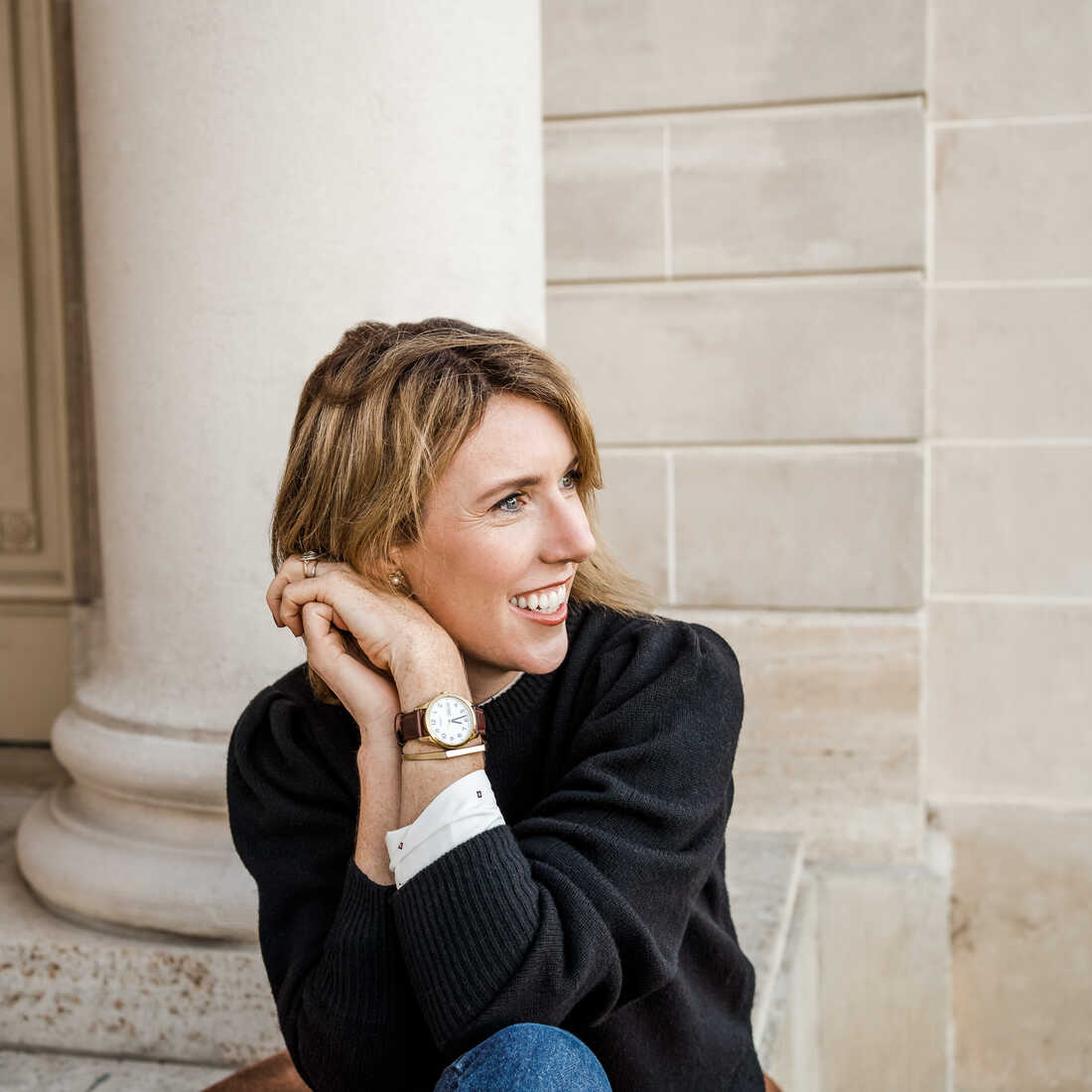
Emily Peters
Kathleen Sheffer/Emily Peters
disguise caption
toggle caption
Kathleen Sheffer/Emily Peters
Peters says that is the form of work she needs to focus on: edgy and a bit bit bizarre. It is easy to change into jaded about well being care prices, she says, however artwork could make the activism come alive, “in order that we hold that matter excessive on our outrage checklist.”
There’s little or no in the best way of coverage prescription on this e-book, however that is a part of the purpose. The artists’ objective is to inject humanity and creativity right into a subject mired in apparently intractable systemic issues and stricken by monetary toxicity. They flip to puppetry, portray, shade concept, and music, searching for to start out a much-needed dialogue that might spur deeper change.
This dialog has been edited for readability and size.
Mara Gordon: What made you need to create this e-book?
Emily Peters: I believe I am at all times very curious why so many individuals – actually nearly all of everyone in any approach concerned within the well being care system – really feel so powerless. Physicians and surgeons and well being care directors and individuals who, to me, appear very, very highly effective, [they] really feel very powerless. And so the e-book took place as fascinated with energy and alter. After which I noticed that artists have this distinctive intersection the place they’re very highly effective, they convey lots of the issues that had been lacking in well being care, attempting to construct a greater future.
MG: What’s it about artwork that looks like a instrument to problem that feeling of powerlessness?
EP: The very first individual I interviewed for the e-book was a photographer, Kathleen [Sheffer], who was a heart-lung transplant survivor. She used her digicam within the hospital to attempt to be seen as extra highly effective, to be seen as a full individual by these very fancy transplant surgeons who’re whisking out and in of her room, viewing her as only a physique. I noticed that she had gained that energy by means of being an artist.
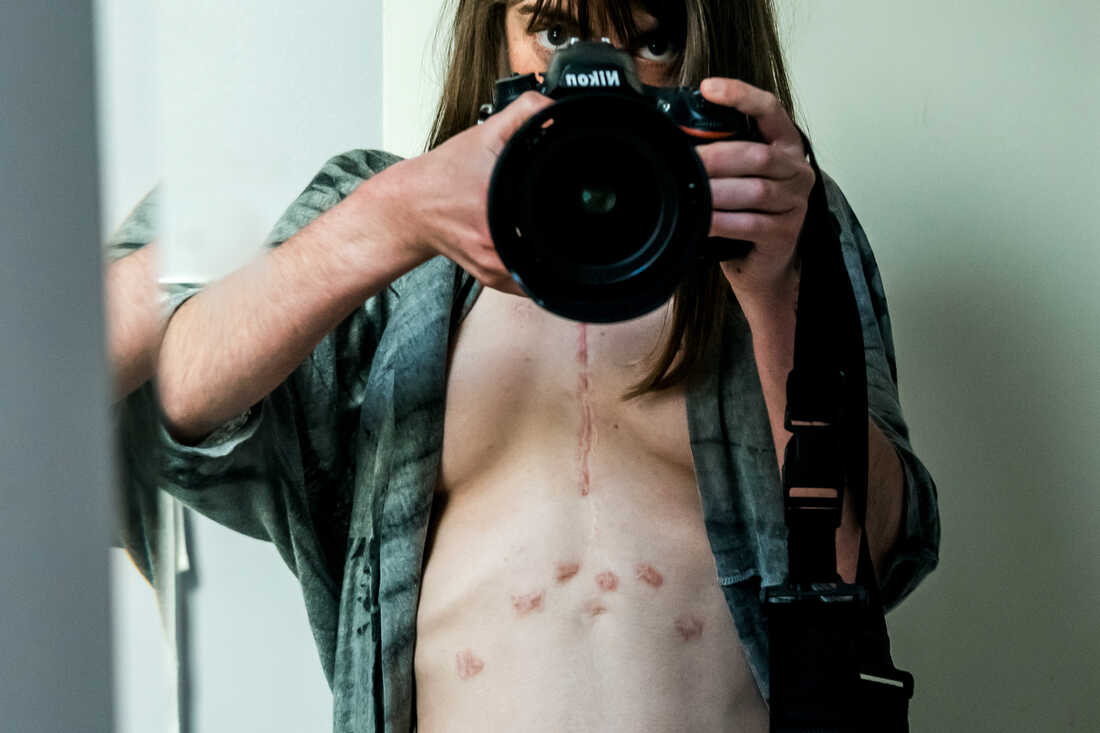
Kathleen Sheffer took this self-portrait, which seems in Artists Remaking Drugs, whereas she was therapeutic from a heart-lung transplant. She took the picture in 2017, 245 days after her surgical procedure.
Kathleen Sheffer/Process Press
disguise caption
toggle caption
Kathleen Sheffer/Process Press

Kathleen Sheffer took this self-portrait, which seems in Artists Remaking Drugs, whereas she was therapeutic from a heart-lung transplant. She took the picture in 2017, 245 days after her surgical procedure.
Kathleen Sheffer/Process Press
I had one other dialog with a doctor out of New York, Dr. [Stella] Sapho … She mentioned in our dialog: “I simply really feel like we do not even know what’s potential.” She actually highlighted that there is this disaster of creativeness. Everyone feels so demoralized that we will not even think about what we need to ask for to make it higher.
That is a creativity downside. And the people who find themselves artistic are artists. They’re actually good at sitting in complexity and paradox, and never wanting every thing to be good, however with the ability to see issues for what they’re … And actually think about. And in order that was the speculation: Oh, there’s one thing actually attention-grabbing at this intersection between artwork and drugs.
MG: You had a traumatic expertise giving beginning. I am so sorry to listen to about it. Inform me a bit extra about what went flawed whenever you had been hospitalized, concerning the methods that did not work appropriately.
EP: There have been so many locations in that course of the place you began to see what is going on flawed in well being care.
It was a model new, beautifully-built facility, however that had points: Folks did not know their approach across the hospital. It is an instructional hospital, so there have been lots of college students and it may be typically chaotic. I really requested for a unique nurse, and the hospital mentioned no. In order that was not a superb a part of the expertise, having my considerations be dismissed.
[There were many] little indignities … Who determined this stuff? There’s a lot in well being care that we simply kind of really feel caught with, like “that is simply the best way it’s.”
Then it is so damaging for the people who find themselves working there: the residents who’re working 24 hours; the medical doctors who really feel burned out; and the nurses who really feel taken benefit of. We won’t have a practical well being care system if everyone concerned is depressing.
MG: My favourite a part of the e-book was the part the place there is a shade palette, named for various medical phenomena: tablet bottle orange, Viagra blue. You speak within the e-book about how we might suppose extra creatively about shade in well being care settings. However I believe lots of people in well being care fear that an excessive amount of shade one way or the other distracts from the seriousness of medication.
EP: So a lot of this stuff, anyone selected, and so they did not do an enormous quantity of analysis on it. They simply selected it, and we take it as gospel now.
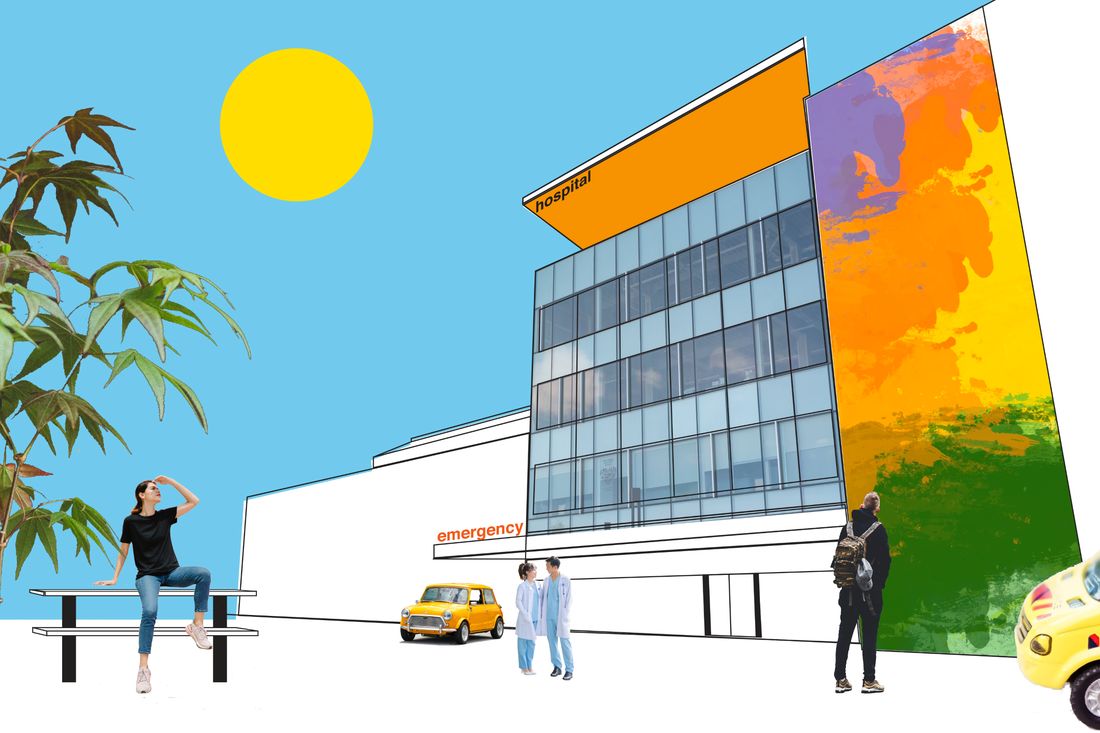
Design strategist Anna Engstrom created this sketch of a futuristic hospital that seems in Artists Remaking Drugs. She writes that she envisions “a extra colourful well being care future.”
Anna Engstrom/Process Press
disguise caption
toggle caption
Anna Engstrom/Process Press

Design strategist Anna Engstrom created this sketch of a futuristic hospital that seems in Artists Remaking Drugs. She writes that she envisions “a extra colourful well being care future.”
Anna Engstrom/Process Press
The white coat ceremony … [I had thought it had started in] in all probability medieval Florence: they had been placing white coats on medical college students and welcoming them into the guild, it simply looks like this historical custom. And it is one thing that was invented in Chicago in 1989. A professor was complaining that the scholars weren’t dressing professionally sufficient.
That’s not one thing that we essentially have to hold with us. However it was additionally a superb instance of how anyone can create a change, and might create a brand new custom, a brand new piece of our tradition.
Similar factor with the appearance of the medical inexperienced, [the ubiquitous color of medical supplies]]. There is a spinach inexperienced that got here from a surgeon right here in San Francisco, simply working to attempt to cut back eyestrain, however that turned very customary in drugs. After which there’s additionally a minty inexperienced, {that a} shade theorist in Chicago simply determined that that was the colour for well being care, that minty inexperienced was going to avoid wasting us all and was going to look so lovely.
As a part of the chapter on shade, we surveyed a pair hundred individuals [and published the results online]: “What colours would you need to see within the hospital?” I used to be anticipating these soothing pastel tones. And it was completely completely different: it was neon purples and oranges and reds. Do not assume what individuals need. We now have the know-how and the aptitude now to construct in methods that give individuals some management and a few company over issues like shade. LED lights are very reasonably priced, and you’ll dial up precisely what shade you need.
MG: I’ve actually been acculturated to the concept that sterility is synonymous with professionalism. However there have been challenges to that concept within the e-book – significantly the chapter on MASS Design Group, and the hospital in Butaro, Rwanda, that they helped design. So perhaps there’s hope that boring medical doctors like me can settle for a bit extra magnificence in our work environments.
EP: Hospitals have lengthy had house for some artwork within them: some sculpture gardens, or a mural, or some artwork right here and there. So there’s a crack within the wall that’s attention-grabbing to discover.
I believe the place it will get additional highly effective is for the artists to be working with the physicians, with the sufferers. Considering, actually, what does a therapeutic surroundings appear like? Speaking about MASS Design, and what they had been in a position to construct. It wasn’t simply making a fantastic hospital, which they did, however utilizing native artisans, and creating jobs for native individuals, and utilizing native stone. Making it in order that the hospital really healed the group that it was serving.

MASS Design Group created the 150-bed Butaro District Hospital in Rwanda as a “collaborative, human-centered, therapeutic house,” writes Peters. The hospital has no hallways; the buildings are related by open gardens and coated patios and cooled with pure airflow. Massive home windows enable sufferers and workers to really feel related to one another and the panorama.
Robert Goddyn/MASS Design Group/Process Press
disguise caption
toggle caption
Robert Goddyn/MASS Design Group/Process Press

MASS Design Group created the 150-bed Butaro District Hospital in Rwanda as a “collaborative, human-centered, therapeutic house,” writes Peters. The hospital has no hallways; the buildings are related by open gardens and coated patios and cooled with pure airflow. Massive home windows enable sufferers and workers to really feel related to one another and the panorama.
Robert Goddyn/MASS Design Group/Process Press
MG: Has anybody advised you that they suppose that well being care is simply too necessary for artwork?
EP: I’ve heard the criticism that that is nearly wallpaper on a pig: “You are speaking about including extra sculpture gardens and rising the price of well being care.” I didn’t need it to be a e-book about creating extra luxurious hospitals.
We now have a disaster of economic toxicity, we have now a disaster of outcomes. It is particularly a e-book about combating these issues, and discovering a strategy to battle these issues that feels potential and human … There’s actual revolutionary potential for the usage of artwork.
MG: You additionally had a very attention-grabbing chapter on how puppetry can assist medical college students be taught to attach with their sufferers by means of creativity and spontaneity.
EP: Puppetry is a very attention-grabbing instrument, not solely to point out the way you empathize with a affected person, but in addition to [think about] what’s occurring with your personal physique. What are you feeling proper now? The place’s your consideration? Particularly with younger physicians in coaching. You are exhausted. You’ve got been in your ft for a protracted, very long time. How is that coming throughout in the way you’re presenting your self? To the affected person? Puppetry is a very eye opening approach to consider these issues.. That puppet helps you suppose: I do not need to are available with my arms crossed … or come within the room and be sitting on the stool and simply instantly turning my again to the affected person.
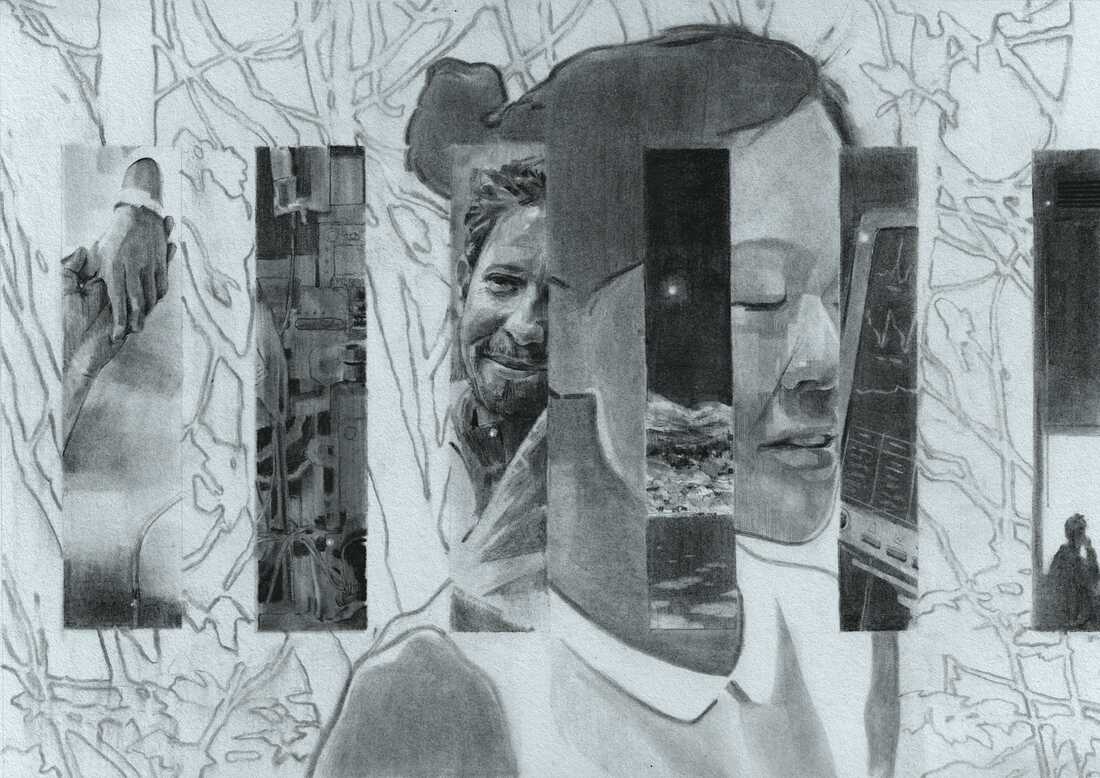
“Tone Shift” by James Lee Chiahan depicts musician Yoko Sen’s journey from being affected person within the hospital to working together with her husband, Avery, to enhance the sounds of ICU alarms around the globe. Chiahan is a Taiwanese-Canadian artist at present understanding of Montreal, Canada.
James Lee Chiahan/Process Press
disguise caption
toggle caption
James Lee Chiahan/Process Press
MG: Do you suppose drugs takes itself too critically? Do we want extra humor in well being care?
EP: You are holding anyone’s coronary heart in your hand – this can be a very intense job. You are attempting to persuade anyone to enter hospice – that’s not simple. This isn’t a straightforward job. However that seriousness can really feel nearly like play performing and actually inauthentic to individuals. That is the place we see lots of people beginning to burn out and say: “Why am I right here? Why am I pretending?” You are placing on this white coat: right here I’m, doing these motions, and it simply feels very insincere.
And that is such a waste to me, as a result of it’s such a fantastic, unbelievable occupation. We, as sufferers, additionally need you guys to be people. We’re in your aspect.
Carmel Wroth edited this story.



